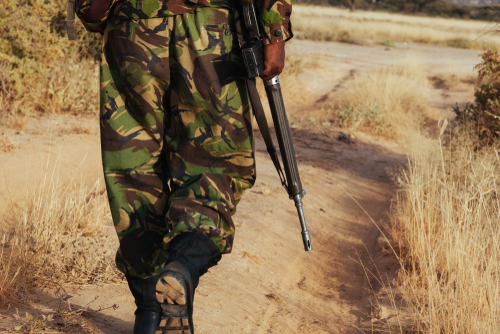It was the first time the American military has acknowledged the December firefight, and Ms. Reho gave no explanation for the Pentagon’s failure to disclose the episode at the time.
The head of Africa Command, Gen. Thomas D. Waldhauser, did not mention the December battle in testimony to Congress this month and only broadly outlined the threats in the region. A senior House Republican aide said on Wednesday that lawmakers had been notified about the Dec. 6 attack soon after it happened.
Defense Secretary Jim Mattis is reviewing the results of a lengthy internal investigation into the October ambush, near the border with Mali, which set off a widespread debate about why American troops are fighting a shadowy war in Niger. A military official said on Wednesday that Mr. Mattis was wrestling with the investigation’s apparent attempts to blame low-level commanders for the deaths of the four soldiers and not implicate senior officers.
The families of the soldiers — Staff Sgt. Bryan C. Black, Staff Sgt. Dustin M. Wright, Staff Sgt. Jeremiah W. Johnson and Sgt. La David Johnson — have not been told of the investigation’s conclusions, said the military official, who spoke on the condition of anonymity because the findings have not yet been released.
The Pentagon appears ready to scale back military operations in West Africa even further. A draft of the investigation, parts of which were described to The Times in February, called for the military to reduce the number of ground missions, and to strip commanders in the field of some authority to send troops on potentially high-risk patrols.
Between 2015 and 2017, there were about 10 instances of American troops and local training partners being attacked in Niger and elsewhere in West Africa, said Brig. Gen. Donald C. Bolduc, the former commander of United States Special Operations in Africa.
Enemy fighters were killed in some of those unreported episodes, General Bolduc said on Wednesday, but there were no American casualties.
The existence of the Dec. 6 firefight was referenced in a terse line in an unclassified report the Trump administration gave to Congress this week about its legal and policy views on using military force. That report, obtained by The Times, mentioned only that a joint American-Nigerien force was attacked by a group of presumed Islamic State militants on that date, and returned fire “in self-defense.”
Ms. Reho portrayed the firefight as an act of self-defense after the unit happened to come under attack.
“The purpose of the mission was to set the conditions for future partner-led operations against violent extremist organizations in the region,” she said. “There was no aspect of this mission focused on pursuing enemy militants, and the combined force was postured to respond as necessary in case contact with the enemy occurred.”
She added: “With that said, our forces do operate in unstable areas and are occasionally exposed to danger from enemy forces. When such a situation occurs, our personnel are authorized to respond to threats and violence appropriately.”

